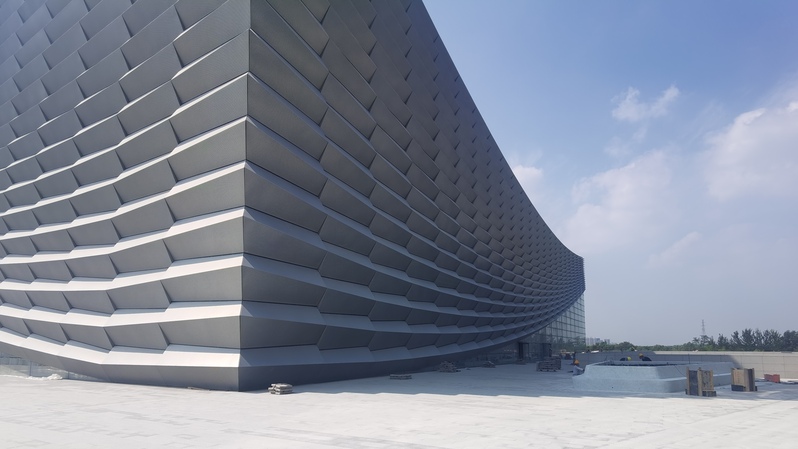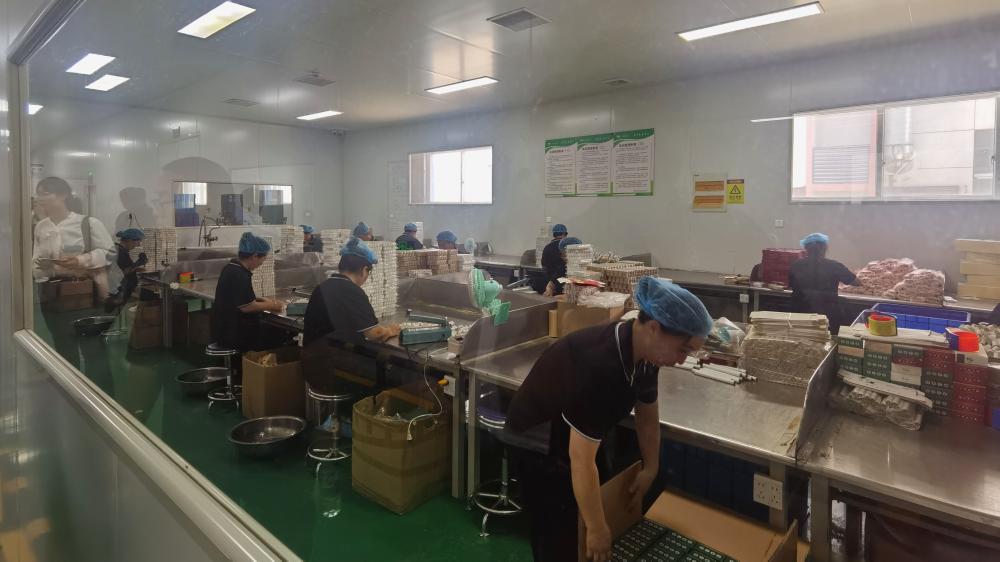After the digital restoration of Beijing Fahai Temple, it feels like a dream and even better than the past. The first authentic night tour of Ming Dynasty murals
Along Chang'an Street, heading west for over 20 kilometers, at the southern foot of Cuiwei Mountain, nestled in green pine and cypress, lies a temple with a history of nearly 600 years, named Fahai.
But this Dharma Sea has no connection with the legend of the White Snake. Instead, it was built by a Ming Dynasty eunuch named Li Tong, who poured out the rewards he received from serving the emperors of the four dynasties, along with various fundraising efforts, to build a "seven hall style" Han style temple. When the temple was built, Emperor Yingzong of the Ming Dynasty, Zhu Qizhen, bestowed an imperial decree on Fahai Zen Temple.
When constructing the temple, Li Tong invited the most skilled palace painters from the "Ministry of Works Camp and Repair Institute" of the current dynasty, such as Wan Fuqing, to create in the main hall of the temple using ancient traditional techniques. They left behind ten murals representing the highest level of Ming Dynasty for future generations, with a total area of 236.75 square meters. Along with the Dunhuang Grottoes in Gansu and the Yongle Palace murals in Ruicheng, Shanxi, they are known as treasures of Chinese mural art.
This time, taking advantage of the 2023 Service Trade Fair, the authentic Fahai Temple will open for night tours for the first time, and together with the newly completed Beijing Fahai Temple Mural Art Museum at the beginning of the year, they will present a mural art feast for citizens and tourists.
Protective opening restrictions on visits
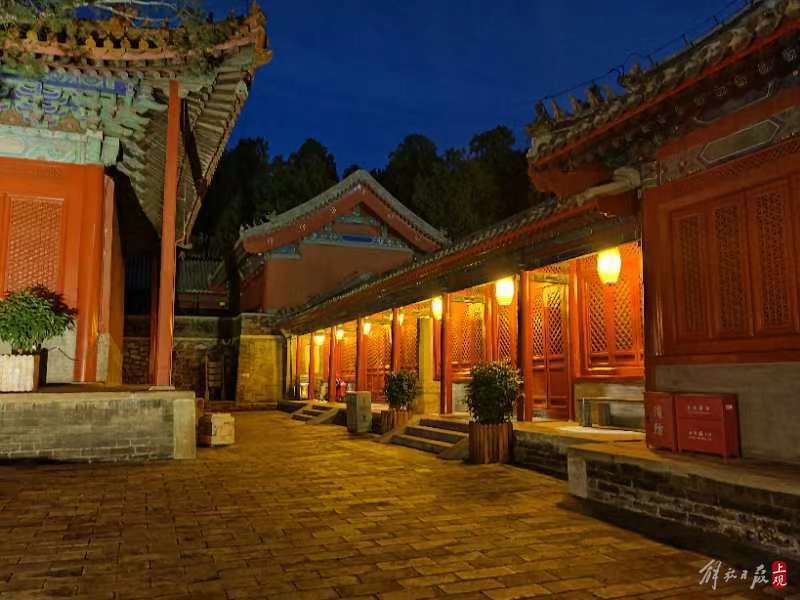
"Difficult to make an appointment."
"Even squatting and grabbing may not necessarily secure tickets."
"It's really worth seeing, the experience is very good."
……
Opening a certain review platform, many visitors who have left footprints at Fahai Temple coincidentally remind latecomers that it is not easy to see the authentic murals!
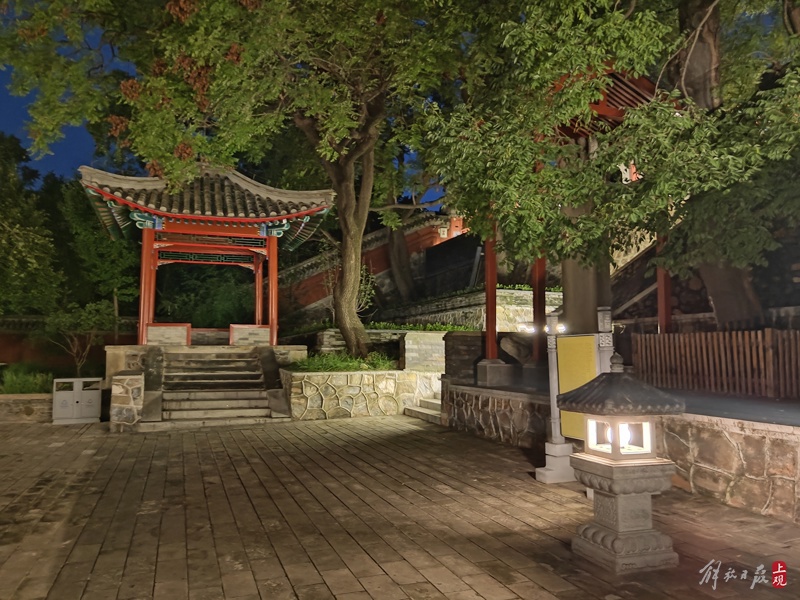
Fahai Temple in the Night
These authentic murals are all hidden in the main hall of Fahai Temple. The "Ten Pavilions" mural depicts 77 characters, including men, women, old and young, Buddhas, gods, and bodhisattvas, as well as gentle looking divine beasts such as lions, tigers, elephants, and foxes, with different postures. These murals use precious pigments such as anthocyanin, rattan yellow, rouge, cinnabar, stone green, and stone blue, and through the techniques of "gold painting" and "powder painting and gold pasting", the images have a three-dimensional sense of relief and a magnificent effect under the illumination of light, achieving ultimate beauty.
In addition to being particular about the materials used, the use of lines in the murals of Fahai Temple is also unique. For example, the mounts of the Three Great Masters, such as the Golden Haired Horse, the Green Lion, and the Six Toothed White Elephant, used various stroke techniques such as dip pen drawing, nail head mouse tail drawing, orchid leaf drawing, and iron wire drawing. For example, the statues of "Treasure of the Palace" and "Water and Moon Guanyin" depict Guanyin wearing a white veil, with a pattern of six diamond flowers spliced together. Each petal is composed of 48 gold threads, as thin as spider silk and cicada wings, making it breathtaking.
"Although murals are good, they are difficult to protect as elements such as water vapor, carbon dioxide, and light can all affect their preservation. Therefore, protective opening can only be carried out by limiting the number of visitors," said Liu Xiaobo, director of the Fahai Temple Mural Art Museum.
For many years, Beijing Fahai Temple has become one of the most difficult places for cultural and museum enthusiasts to visit, with a maximum of 15 people per visit and a 30 minute event, with a daily reservation limit of 200 people.
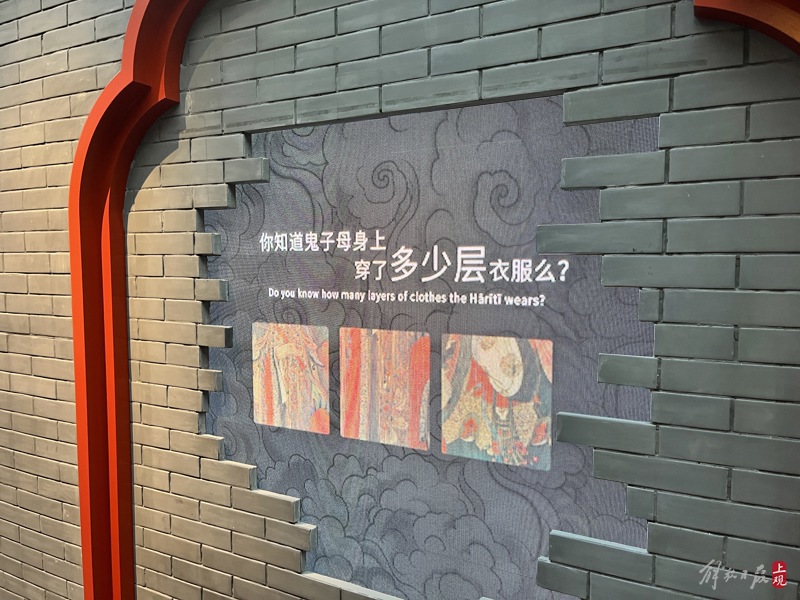
Digital restoration expansion exhibition methods
Arriving at the foot of Cuiwei Mountain, the situation of wanting to see murals was finally alleviated at the beginning of this year - the Fahai Temple Mural Art Museum opened earlier this year. The museum uses digital technologies such as a 4K giant display screen and a 360 degree surround landing screen to restore the authentic murals inside the Fahai Temple hall, allowing visitors to experience and touch the exquisite craftsmanship of murals up close.
Problem Wall in Art Museum
The Fahai Temple Mural Art Museum consists of a reception hall, a prelude hall, a mural hall, a ball screen hall, a restoration hall, and a tail hall. It is divided into two floors, with the first floor containing exhibition and exchange, cultural and creative sales, coffee and leisure spaces, as well as a problem wall. Viewers can take questions on the wall, such as "Do you know how many layers of clothing is worn by the Ghost Mother?" "Do you know what the 49 types of magical tools that appear in Fahai Temple are called?", and enter the negative level to find answers.
On the negative level, the journalist seems to be immersed in a mystical space, and the characters and painting details in the murals are vividly reproduced through digital technology: from the hair on the characters' heads to the iris in the eyes of animals, to the entire wall of the mural, they can be clearly presented one by one.
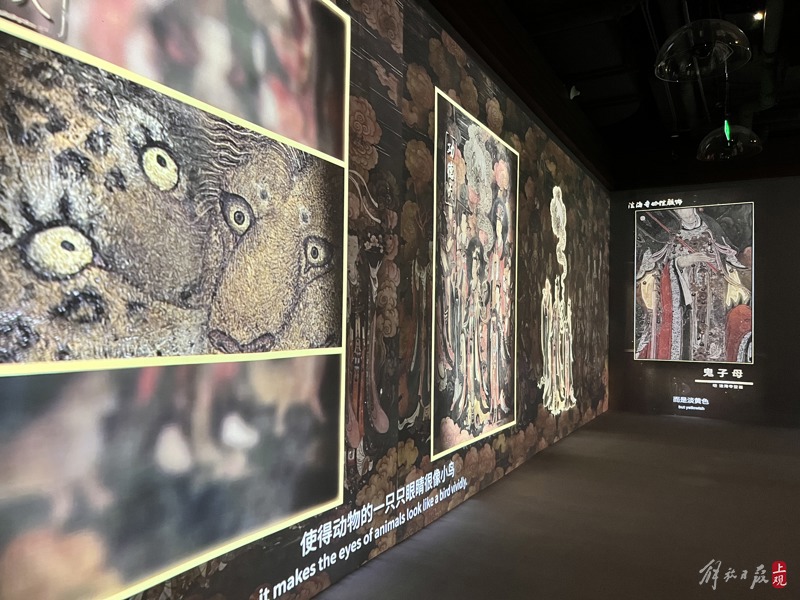
Digital technology showcases mural details
The digital restoration in the art museum is not just a light and shadow show, but also brings the murals to life. "For example, regarding the issue of the Japanese mother on the wall, in the exhibition hall on the basement floor, more than ten pieces of clothing worn by the Japanese mother were opened layer by layer through digital technology, allowing the audience to see each piece of clothing and its origin and evolution." Liu Xiaobo said.
Enlarge and zoom in on local details, and introduce the content of the mural item by item. The reporter personally felt that it would take at least 4 hours to patiently read every detail inside the art museum.
In addition to the murals inside Fahai Temple, the art museum also introduces nearly a hundred cultural relics and cave materials from both domestic and foreign sources, and compares them horizontally with the murals of Fahai Temple, allowing the audience to have a clearer and more intuitive understanding of the source and influence of Fahai Temple murals. "For example, through our explanation, the audience can understand that the murals of Fahai Temple and Japanese ukiyo-e have the same origin, both of which originated from the Zhejiang style techniques of the Ming Dynasty," said Liu Xiaobo.
At the exit of the art museum, the reporter saw this sentence: "Understanding Fahai Temple, protecting Fahai Temple, promoting Fahai Temple, inheriting Fahai Temple. So, each of us is the discoverer of Fahai Temple."
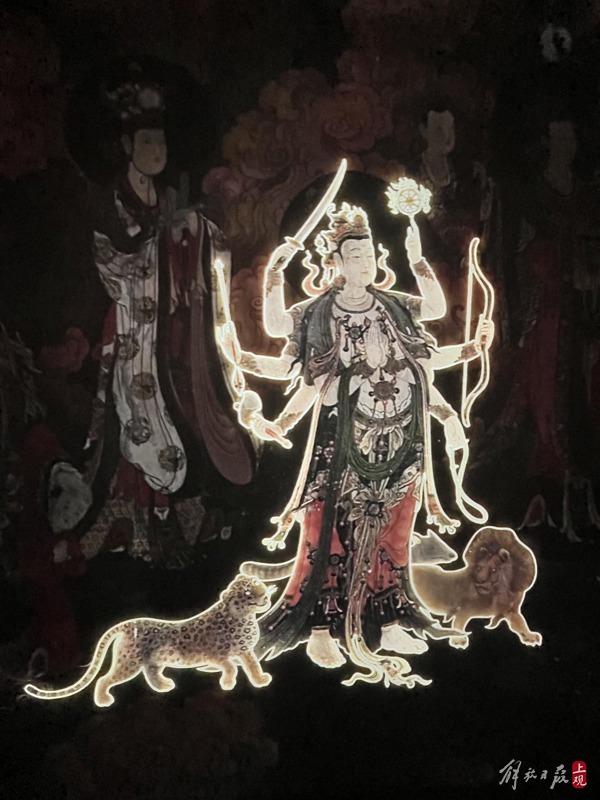
Now, in order to encourage more people to become discoverers of Fahai Temple together, relevant departments have opened the Fahai Temple night tour project for the first time from August 31 to September 10, divided into three periods: 18:00, 18:50, and 19:30. They have also launched discounted tickets to the Fahai Temple Mural Art Museum, allowing more people to enjoy this art and cultural feast hidden deep in western Beijing.
"The good treasure of our ancestors needs us all to understand and protect together," said Liu Xiaobo.

